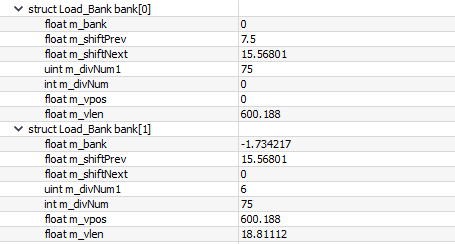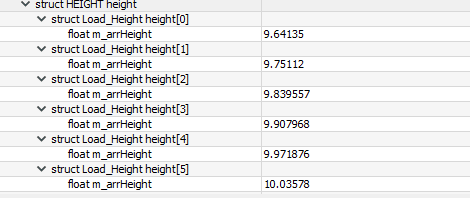Using the height maps I calculated the elevation profile of one of my tracks:
The way I did it was that I first cropped the full .raw heightmap so that I only got the bit where my track was layed out, and then in Photoshop I posterized it by 60 levels to get the contours:
Then in Illustrator I traced lines of the contour map and placed the track map on top of it. I then labelled the contour lines 0, +1, +2, +3 etc (in the picture below the values are converted to metrics, +8.0 is where 0 used to be, etc.)
In the TPE app I went to the "place trackside object" mode, used the navigator at the top of the screen to move the cursor to the start of the track. I then compared the location of the cursor to the map, and measured the corresponding location on the map.
Using a ruler, I measured the distance from the data point to the contour lines immediately above and below it, and then interpolated a height value based on that. For instance, if the data point was halfway between line 0 and line +1, the height value is halfway in between, i.e. 0.5. If the data point was located at 75% between line +2 and +3 (with 0% being +2, and 100% being +3), the height value is 2.75. I took a sample every 100 meters, so in total there were 43 samples on this 4300 meter long circuit.
Once that was done, I offset all the height values so that the lowest value is 0. Then I checked the elevation difference in the game, divided the elevation difference with the greatest height value in my list, which gave me a factor to multiply all the height values with to obtain the metric values (relative to the lowest point of the track). The blue data points on the map above are the original contour labels converted to metric values.
Finally I plotted all the data points in the chart at the top of this post, and offset them so that 0 meters is at the start line, rather than at the start of the home straight.
As you might have guessed already there was quite a lot of work involved in doing this, so I wouldn't recommend doing it unless you really want to know the elevation profile of your track...
Although maybe there is a way to extract the track data straight from the app, and automate the process of plotting an elevation profile? Do the anchors in the app contain elevation data?

 ..doesn't seem to work with Bluestacks, only Andy ??
..doesn't seem to work with Bluestacks, only Andy ??
..doesn't seem to work with Bluestacks, only Andy ??
..doesn't seem to work with Bluestacks, only Andy ??



 I'm proud of it anyways.
I'm proud of it anyways.






 . I don't have time for such thing though.
. I don't have time for such thing though.
